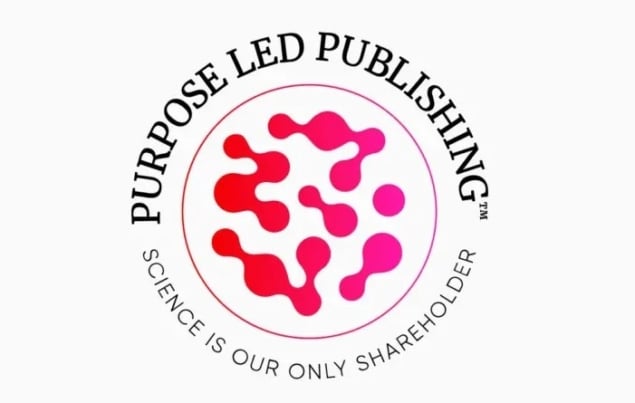
Three of the world’s largest physics publishers have joined forces to announce a new “purpose-led” publishing coalition. The American Institute of Physics (AIP), the American Physical Society (APS) and IOP Publishing, which publishes Physics World, have come together to remind researchers what sets them apart from other publishers. The three firms confirm that they will continue to reinvest the funds generated from publishing back into research and “never” have shareholders that results in putting “profit above purpose”.
Scientific publishers have long been central to managing the process of peer review by which researchers judge the quality of papers submitted to journals. In recent years, publishers have invested heavily in digital technology and developed new ways to disseminate research to a wider audience. However, some firms have come under the spotlight for the money they make, with Dutch publishing giant Elsevier, for example, announcing profits of €1.2bn in 2022 – a profit margin of almost 40%.
The recent move to open access, in which researchers pay a fee to publish an article in a journal, has also encouraged some publishers to boost revenues by publishing as many papers as possible. At the same time, there has been a rise in retractions, especially of fabricated or manipulated manuscripts sold by “paper mills”. Last year, for example, more than 10 000 journal articles were retracted – a record high – with about 8000 alone from journals owned by Hindawi, a London-based subsidiary of the publicly-owned publisher Wiley.
The new “purpose-led” coalition is designed to show how the three learned-society publishers have a business model that is not like that of profit-focussed corporations. In particular, they plough all the money generated from publishing back into science by supporting initiatives such as educational training, mentorship, awards and grants. “Purpose-led publishing is about our dedication to science, and to the scientific community,” says Antonia Seymour, IOP Publishing’s chief executive. “We’re proudly declaring that science is our only shareholder.”
“Science is out shareholder”
The coalition has announced five main objectives that they will abide by. These are: investing 100% of funds from publishing back into science; publishing only content that “genuinely adds to scientific knowledge”; ensureing their terms are reasonable; putting research integrity ahead of profit; as well as admitting errors and setting them right. The trio also say they will “never” relinquish their not-for-profit status or have shareholders “for whom we put profit above purpose”.

Celebrating the physics of the cosmos and 20 years of JCAP
The ethos is underlined by Alix Vance, chief executive of AIP Publishing, who says the three firms “exist purely to give back to science”, adding that they want to “benefit science and all those engaged in its advancement”. Meanwhile, Rachel Burley, chief publications officer at the APS, says that researchers who publish articles any of the three purpose-led publishing members are “not only advanc[ing] knowledge through high quality, peer-reviewed journals [but] also investing in the community they are a part of”.
- SEO Powered Content & PR Distribution. Get Amplified Today.
- PlatoData.Network Vertical Generative Ai. Empower Yourself. Access Here.
- PlatoAiStream. Web3 Intelligence. Knowledge Amplified. Access Here.
- PlatoESG. Carbon, CleanTech, Energy, Environment, Solar, Waste Management. Access Here.
- PlatoHealth. Biotech and Clinical Trials Intelligence. Access Here.
- Source: https://physicsworld.com/a/major-physics-publishers-join-forces-to-announce-purpose-led-publishing-initiative/



